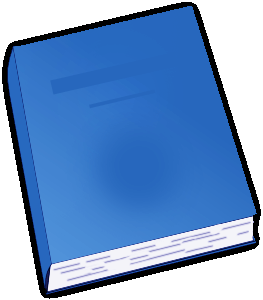Vegetable Dyes Being a Book of Recipes and Other Information Useful to the Dyer By: Ethel M. Mairet |
|---|

Vegetable Dyes Being a Book of Recipes and Other Information Useful to the Dyer by Ethel M. Mairet is a comprehensive guidebook that dives into the ancient art of dyeing fabrics using natural, plant-based materials. The author, Mairet, brings her remarkable expertise and passion for this craft to life, providing readers with an insightful and practical manual.
Mairet begins by introducing the readers to the fascinating world of vegetable dyes, discussing their historical significance and cultural importance throughout various civilizations. This serves as a foundation for understanding the relevance of natural dyes in today's context. The author’s extensive knowledge in this field shines through as she explores the chemistry and properties of different plants and their pigments, ensuring that readers gain a deeper understanding of the dyeing process.
One of the strongest aspects of this book is its detailed recipe section. Mairet presents a vast array of recipes, offering step-by-step instructions for achieving an extensive range of colors and effects. From bold and vibrant hues to delicate pastels, every recipe is thoroughly explained and documented. The addition of photographs showcasing the final results adds an extra visual appeal and helps readers better visualize the outcome. Each recipe includes a list of necessary materials, ensuring that readers are equipped with the tools they need before embarking on their dyeing journey.
Throughout the book, Mairet emphasizes the importance of sustainability and environmentally friendly practices. She encourages readers to use locally sourced plants and promotes the use of non-toxic mordants, providing recipes and instructions for their preparation. This conscientious approach is incredibly valuable in a time where environmental considerations are increasingly critical.
Although the book primarily focuses on vegetable dyes, Mairet does not limit herself solely to the botanical world. She dedicates a section to animal fibers, exploring the dyeing techniques utilized with proteins such as silk and wool. This expansion broadens the book's usefulness, catering to a wider range of readers and ensuring it remains a go-to resource for any dyer, whether they are working with plants or animals.
One potential drawback of the book is its lack of color illustrations. While Mairet’s descriptions are detailed, a visual representation of the different colors achieved using various dye sources would have greatly enhanced the reader's experience. Additionally, beginners may find some portions of the book overwhelming, particularly when it delves into technical aspects or detailed chemistry explanations. However, Mairet does include a glossary, making it easier for readers to grasp these complex concepts.
In conclusion, Vegetable Dyes Being a Book of Recipes and Other Information Useful to the Dyer is an indispensable resource for anyone interested in the art of natural dyeing. Ethel M. Mairet’s expertise and passion shine through in every page, making it a must-read for both beginners and experienced dyers alike. By providing detailed recipes, fostering a sustainable approach, and delving into various fiber types, Mairet equips readers with the knowledge and inspiration necessary to embark on their own natural dyeing adventures. Despite a few minor limitations, this book serves as an invaluable guidebook in the world of natural dyeing, illuminating the beauty and potential of plant-based colorants on textiles. Being a Book of Recipes and Other Information Useful to the Dyer by ETHEL M. MAIRET Faber and Faber Ltd 24 Russell Square London First published in Mcmxvi by the Ditchling Press Reprinted, for the sixth time April Mcmxxxviii and published by Faber and Faber Limited 24 Russell Square, London Printed at the Ditchling Press, Ditchling All rights reserved CONTENTS CHAPTER PAGE I. Wool, Silk, Cotton and Linen 1 II. Mordants 6 III. British Dye Plants 11 IV. The Lichen Dyes 16 V. Blue 24 VI. Red 31 VII. Yellow 35 VIII. Brown and Black 40 IX. Green 43 X. The Dyeing of Cotton 46 XI. The Dyeing of Silk 56 Glossary 60 Bibliography 63 Index 65 CHAPTER I WOOL SILK COTTON AND LINEN WOOLS are of various kinds: Highland, Welsh and Irish wools are from small sheep, not far removed from the wild state, with irregular short stapled fleeces... Continue reading book >>
|
| This book is in genre |
|---|
| Non-fiction |
| eBook links |
|---|
| Wikipedia – Ethel M. Mairet |
| Wikipedia – Vegetable Dyes Being a Book of Recipes and Other Information Useful to the Dyer |
| eBook Downloads | |
|---|---|
|
ePUB eBook • iBooks for iPhone and iPad • Nook • Sony Reader |
Kindle eBook • Mobi file format for Kindle |
|
Read eBook • Load eBook in browser |
Text File eBook • Computers • Windows • Mac |
| Review this book |
|---|